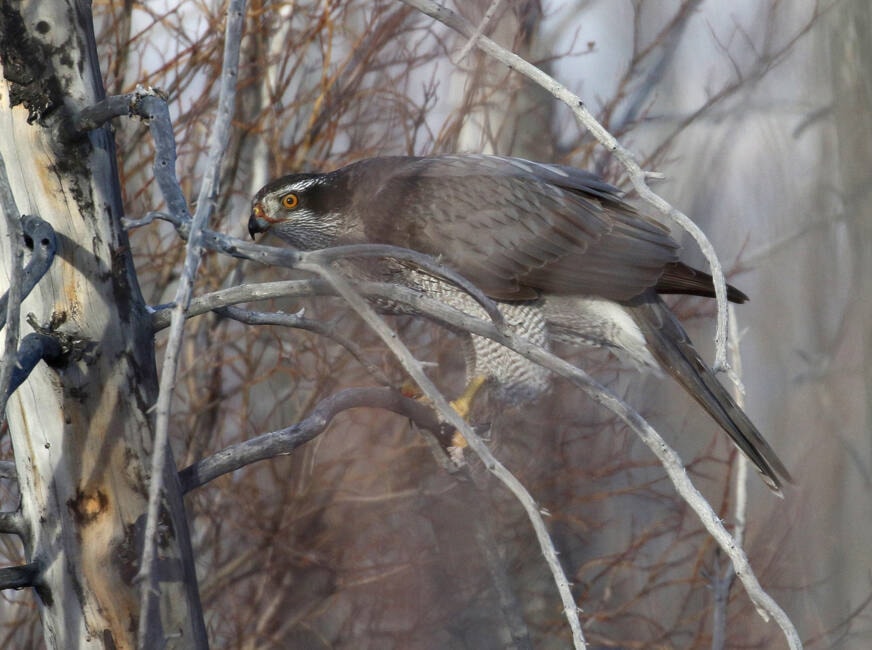Last week I wrote about the biology and importance of the northern goshawk, its need for old and mature forests and I mentioned that numbers of birds are declining due to forest harvesting.
Extensive field research on goshawks has been carried out for a long time on Haida Gwaii and more recently in the Skeena region of the mainland. All studies show declines in numbers are correlated with increased area and rate of harvesting of old and mature forests.
Fieldwork has clearly demonstrated what the habitat requirements are, and enough information has now been gathered to be able to predict how much territory each breeding pair requires for both nesting and foraging.
From field studies, we know that goshawks are central nesters meaning they nest in the centre of their territory and that the nests are well spaced apart throughout areas of suitable habitat.
Goshawk pair territories can be, and have been, mapped, and their required foraging habitat can be predicted. The territory size can vary from year to year depending on the prevailing weather conditions and availability of the food sources (prey species).
The nest is in old or mature forest containing the desired structural features to provide cover, perches, nest sites as well as cover and food resources for goshawk prey items (hares, grouse, squirrels, small birds etc.). This central core is critical for success. Disturbance, especially noise associated with forest harvesting and road building, should be avoided because the parents are sensitive to noise and may abandon the nest.
Surrounding the core is an area that is important for summer foraging for the male to hunt and feed the chicks and mother at the nest. This is then surrounded by a winter foraging area that is especially important to ensure the female bird obtains enough food during the winter to prepare her for the spring breeding season.
Best management practices have been proposed to ensure territories remain viable. The core nest area must be left intact (no harvesting at all). A partial cutting silvicultural system may be used in the summer foraging area provided there is 70 per cent retention of forest structural features required by goshawk prey (food) items.
Partial cutting could happen in the winter foraging area provided there is 50 per cent retention of forest structural features needed by prey animals.
Numbers of the genetically distinct subspecies living on Haida Gwaii are a mere fraction of the historical estimates and are correlated with old-growth harvesting. The Haida people have adopted the goshawk as their National Bird and called it Stad K’un (wings brushing branches). A full community plan is being developed to prevent the complete loss of this subspecies.
Fieldwork in the Skeena region also indicates dramatic declines that can be related directly to the amount and rate of clearcut harvesting. Forest managers are aware of the goshawk’s decline and are well-informed about recommended management practices.
To prevent extirpation of northern goshawks they must be encouraged to implement plans as soon as possible.
